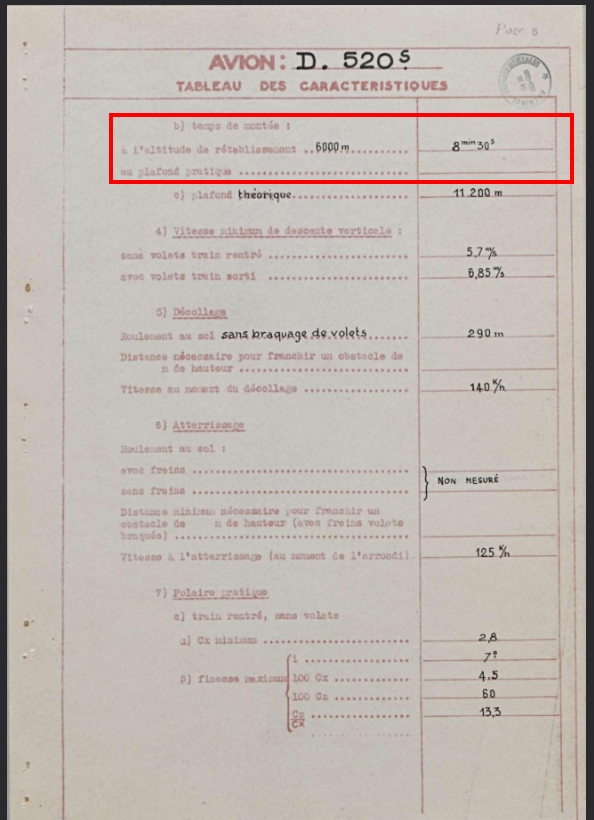So I’m about to unlock the Dewoitine 520, BR 3.0, fighter aircraft, and was surprised of its low dynamic performances, most notably the climb rate, compared to fighters before it.
(numbers without modifications)
Our boy here climbs at 6.9m/s, which is impressively low to me.
It’s nearly equivalent to a potez 630 which, mind you, is a twin engine two crew aircraft.
Meanwhile the two fighters before, the MS.400 series and the VG.33C-1, and its main historical german adversary, the BF109 E series, all surpass that by a lot
- 9.4m/s for a MS410
- 10.4m/s for the V.G.33C-1
- 14.3m/s for both BF109 E1 and E3 (14.1m/s for the E4)
What bother me, beyond the fact it’s actually slower to ascend than some bombers
(my M.B174 climbs faster without modifications even loaded with bombs)
Is that I did some basic digging through wikipedia articles and its associated sources only to find no numbers supporting it being that low. The engine was more powerful than the one on VG33s and MS410s so even if it was heavier by 5% to 10% in gross weight, its superior engine would not justify actually being much slower to ascend than those two.
The numbers I got to find in associated articles straight mention between 11.3m/s and 14.3m/s of climb rate and here we are half that number. Why ?
Another fact is that the D.520 was known in Europe to be one of the more manoeuvrable aircrafts, being a solid match against a BF109 even tho slower yet you are here with something turning only 1 sec shorter but can’t remotely climb as fast so you will lose because the guy eventually have that critical speed and position advantage over you.
That BF109 E most likely justify its climb speed to its historically better engine, but I found a report where it says during a study in 1940 comparing a french recovered BF109 E to french aircrafts of the time. A BF109 E was better in climbing, yes, but “better” isn’t the word that one would use in goddamn 6.9m/s vs 14.3m/s -_- . That same report also do mention the D.520 to have the upper hand in some cases, mostly turn combat.
The D.520 had severe faults putting it behind in performances, namely cooling issues and landing gears doors opening during high-G manoeuvers. But I do not think it should put you so much behind in performances, especially in AB where you play at your best performances game long. We’re to a point I’d actually rather stay and play in br 2.0 with my MS410…
I could dig more but I had enough material to start the post here to ask for our D.520 to get his natural 13m/s climb rate, good middle ground to be decent, still lower than a BF109 because it always was lower. I believe it should also benefit from a reduced 360° turn duration because how else would it come back as more manœuvrable.
Sources:
Wiki page for D.520
Wiki pages for BF109, VG.33 and MS400 series
Do check the wiki pages in both languages, they have complementary infos on there
D.520 journal in-depth brochure
You can find the article mentionning the recovered bf109 vs 30s and 40s french aircraft study yourself, I will not post it because the one i have is not https
Have a good day


